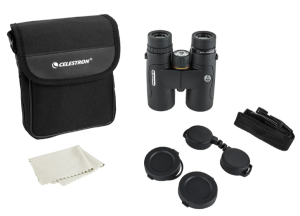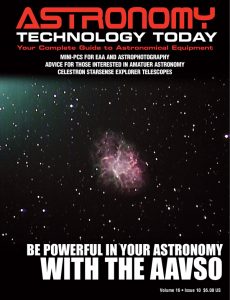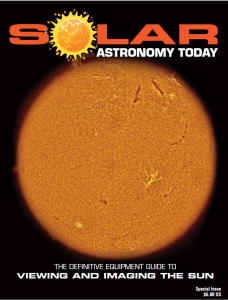Celestron Nature DX binoculars have received a major upgrade with the addition of ED objective lenses offered in 8x42mm and 10x42mm configurations. Extra-Low Dispersion (ED) glass virtually eliminates chromatic aberration, also known as color fringing, a visual defect common in binoculars. The Celestron Nature DX binoculars deliver razor sharp images, even at the edges of the field of view. ED glass is also known for producing images with outstanding, true-to-life color.
 The Celestron Nature DX binoculars feature fully multi-coated optics. A binocular can be considered “fully multi-coated” when all air-to-glass surfaces are coated with multiple layers of anti-reflectivity coatings so that the maximum amount of light passes through the glass to the eye. The prisms inside the binoculars are made of high quality BaK-4 glass with phase coatings applied so that more light is reflected off their internal faces and passes through to the eye.
The Celestron Nature DX binoculars feature fully multi-coated optics. A binocular can be considered “fully multi-coated” when all air-to-glass surfaces are coated with multiple layers of anti-reflectivity coatings so that the maximum amount of light passes through the glass to the eye. The prisms inside the binoculars are made of high quality BaK-4 glass with phase coatings applied so that more light is reflected off their internal faces and passes through to the eye.
Taken together, the fully multi-coated lenses and BaK-4 prisms maximize light transmission for the remarkably bright, highly detailed images. The ED objective lenses further enhance these features, especially in low light conditions.
A durable rubber armored, polycarbonate housing protects the Celestron Nature DX binoculars from damage without weighing you down. Viewing through the binoculars is comfortable for both eyeglass wearers and non-eyeglass wearers, thanks to the durable twist-up eyecups. Twist through multiple click stops find the position that works best for you. What’s more, the binoculars are fully waterproof and filled with dry nitrogen gas to prevent internal fogging of lenses. Nature DX ED binoculars can stand up to even the toughest outdoor conditions.
The Celestron Nature DX binoculars include a strap designed for comfort, protective lens caps and a protective padded nylon case for storage and transport. They are also tripod-adaptable, so you can mount them on any standard photographic tripod for extended viewing or digiscoping (photography through the eyepiece). The tripod adapter is sold separately.
Both binoculars feature a close focus of just 6.5 feet, making them perfect for viewing birds, butterflies, plants, or other subjects. For distance viewing, both models offer a wide field of view so you can easily follow subjects as they move with less need to move the binoculars.
Celestron Nature DX ED 8x42mm Binocular specifications include:
– Magnification: 8x
– Objective Lens Diameter: 42mm (1.65″)
– Angular Field of View: 7.5°
– Linear Field of View (@1000 yds)/@1000 m): 393 ft (129 m)
– Exit Pupil: 5.25mm (0.21″)
– Eye Relief: 17.8mm (0.70″)
– Close Focus: 6.5 ft (2 m)
– Interpupillary Distance (max): 74mm (2.91″)
– Interpupillary Distance (min): 56mm (2.20″)
– Diopter Adjustment Range: ±3
– Twilight Factor: 18.33
– Relative Brightness: 27.56
– Limiting Stellar Magnitude: Ideal – 10.62, Moderate – 9.62, Poor – 8.62
– Weight: 24.9 oz (705 g)
– Dimensions: 142mm x 128mm x 56mm (5.6″ x 5″ x 2.2″)
The Celestron Nature DX ED 10x42mm Binocular specifications include:
– Magnification:10x
– Objective Lens Diameter: 42mm (1.65″)
– Angular Field of View: 5.9°
– Linear Field of View (@1000 yds) / @1000 m): 309 ft (103 m)
– Exit Pupil: 4.1mm (0.16″)
– Eye Relief: 14.3mm (0.56″)
– Close Focus: 6.5 ft (2 m)
– Interpupillary Distance (max): 74mm (2.91″)
– Interpupillary Distance (min): 56mm (2.20″)
– Diopter Adjustment Range: ±3
– Twilight Factor: 20.49
– Relative Brightness: 16.81
– Limiting Stellar Magnitude: Ideal – 10.62, Moderate – 9.62, Poor – 8.62
– Weight: 24.9 oz (705 g)
– Dimensions: 142mm x 128mm x 56mm (5.6″ x 5″ x 2.2″)
You can learn more about the Celestron Nature DX binoculars here.

 And to make it easier for you to get the most extensive news, articles and reviews that are only available in the magazine pages of Astronomy Technology Today, we are offering a 1-year magazine subscription for only $6! Or, for an even better deal, we are offering 2 years for only $9. Click here to get these deals which only will be available for a very limited time. You can also check out a free sample issue here.
And to make it easier for you to get the most extensive news, articles and reviews that are only available in the magazine pages of Astronomy Technology Today, we are offering a 1-year magazine subscription for only $6! Or, for an even better deal, we are offering 2 years for only $9. Click here to get these deals which only will be available for a very limited time. You can also check out a free sample issue here.
The sun is more active than it has been in years! If you’d like to learn more the technology behind solar observing, solar imaging and more, you can check out our free publication, “The Definitive Guide to Viewing and Imaging the Sun”. You don’t have to sign up or provide any information, simply click here and enjoy reading!

